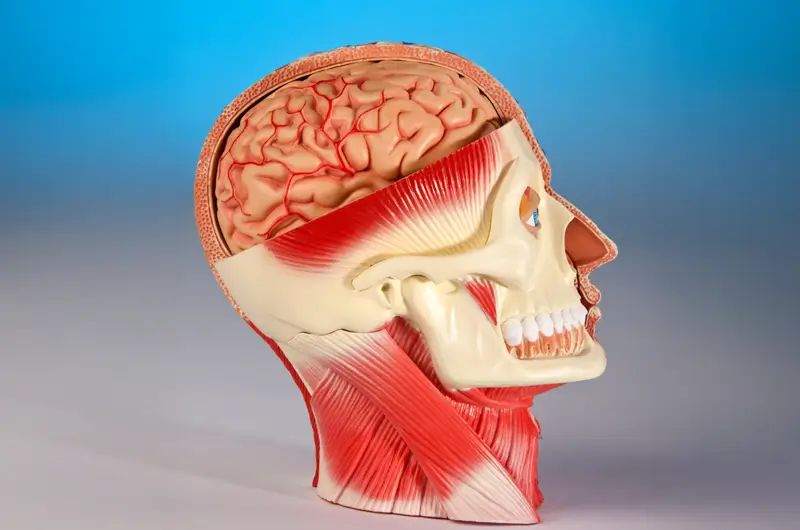A craniotomy is the surgical removal of part of the bone (called a bone flap) – from the skull to access/expose the brain. The section of bone – called the bone flap – is removed using specialized tools. The procedure is performed to gain access to the location where further treatment is required. Once the bone flap is temporarily removed, it is further replaced to its original position after the surgery. Typically, the procedure is performed by a neurosurgeon. To code and bill for craniotomy procedures accurately, you need the right team of specialists who understand the complexities involved. Outsourcing to specialists in neurosurgery billing and coding is a practical strategy for implementing industry best practices and ensuring accurate, compliant claims.
Knowing the difference between a craniotomy and craniectomy is important. In a craniotomy, a part of the skull is temporarily removed. Once the surgery is complete, the skull piece is restored to its original position. A craniectomy is also a brain surgery that removes part of the skull, but the skull piece is not put back when the procedure is over.
Generally, a craniotomy is performed to treat certain severe conditions of the brain such as – tumors, aneurysm, swelling (cerebral edema), blood clot or bleeding inside the skull, epilepsy, intracranial pressure and skull fracture. In certain cases, the procedure is used to implant devices for movement disorders such as Parkinson’s disease. There are different types of craniotomies and each type is named for the technique or location used in the surgery. Common types of craniotomy include – stereotactic, endoscopic, keyhole, bifrontal, pteronial (frontotemporal), orbitozygomatic, translabyrinthine and posterior fossa craniotomy. Each of the craniotomies is named based on the technique or location used in the surgery. The type of craniotomy performed is based on the condition being treated and the benefits and risks involved.
Documenting and Coding Craniotomy Procedures
To ensure proper reimbursement for craniotomy procedures, clinical documentation must clearly support the medical necessity of the craniotomy or craniectomy. In the CPT coding system, these procedures are listed in the Surgery – Nervous System section, specifically under the “Skull, Meninges, and Brain” heading and the “Craniectomy or Craniotomy” subheading (CPT codes 61304–61576). Many of these codes include both terms—craniectomy and craniotomy—meaning that the same CPT code applies regardless of which procedure is documented. Accurate documentation of the clinical indications and surgical details is essential for selecting the correct craniotomy CPT code and avoiding claim denials.
- 61304 Craniectomy or craniotomy, exploratory; supratentorial
- 61305 Craniectomy or craniotomy, exploratory; infratentorial (posterior fossa)
- 61312 Craniectomy or craniotomy for evacuation of hematoma, supratentorial; extradural or subdural
- 61313 Craniectomy or craniotomy for evacuation of hematoma, supratentorial; intracerebral
- 61314 Craniectomy or craniotomy for evacuation of hematoma, infratentorial; extradural or subdural
- 61315 Craniectomy or craniotomy for evacuation of hematoma, infratentorial; intracerebellar
- 61316 Incision and subcutaneous placement of cranial bone graft (List separately in addition to code for primary procedure)
- 61320 Craniectomy or craniotomy, drainage of intracranial abscess; supratentorial
- 61321 Craniectomy or craniotomy, drainage of intracranial abscess; infratentorial
- 61322 Craniectomy or craniotomy, decompressive, with or without duraplasty, for treatment of intracranial hypertension, without evacuation of associated intraparenchymal hematoma; without lobectomy
- 61323 Craniectomy or craniotomy, decompressive, with or without duraplasty, for treatment of intracranial hypertension, without evacuation of associated intraparenchymal hematoma; with lobectomy
- 61343 Craniectomy, suboccipital with cervical laminectomy for decompression of medulla and spinal cord, with or without dural graft (e.g., Arnold-Chiari malformation)
- 61450 Craniectomy, subtemporal, for section, compression, or decompression of sensory root of gasserian ganglion
- 61458 Craniectomy, suboccipital; for exploration or decompression of cranial nerves
- 61460 Craniectomy, suboccipital; for section of 1 or more cranial nerves
- 61500 Craniectomy; with excision of tumor or other bone lesion of skull
- 61501 Craniectomy; for osteomyelitis
- 61510 Craniectomy, trephination, bone flap craniotomy; for excision of brain tumor, supratentorial, except meningioma
- 61512 Craniectomy, trephination, bone flap craniotomy; for excision of meningioma, supratentorial
- 61514 Craniectomy, trephination, bone flap craniotomy; for excision of brain abscess, supratentorial
- 61516 Craniectomy, trephination, bone flap craniotomy; for excision or fenestration of cyst, supratentorial
- 61517 Implantation of brain intracavitary chemotherapy agent (List separately in addition to code for primary procedure)
- 61518 Craniectomy for excision of brain tumor, infratentorial or posterior fossa; except meningioma, cerebellopontine angle tumor, or midline tumor at base of skull
- 61519 Craniectomy for excision of brain tumor, infratentorial or posterior fossa; meningioma
- 61520 Craniectomy for excision of brain tumor, infratentorial or posterior fossa; cerebellopontine angle tumor
- 61521 Craniectomy for excision of brain tumor, infratentorial or posterior fossa; midline tumor at base of skull
- 61522 Craniectomy, infratentorial or posterior fossa; for excision of brain abscess
- 61524 Craniectomy, infratentorial or posterior fossa; for excision or fenestration of cyst
- 61526 Craniectomy, bone flap craniotomy, transtemporal (mastoid) for excision of cerebellopontine angle tumor;
- 61530 Craniectomy, bone flap craniotomy, transtemporal (mastoid) for excision of cerebellopontine angle tumor; combined with middle/posterior fossa craniotomy/craniectomy
- 61533 Craniotomy with elevation of bone flap; for subdural implantation of an electrode array, for long-term seizure monitoring
- 61534 Craniotomy with elevation of bone flap; for excision of epileptogenic focus without electrocorticography during surgery
- 61535 Craniotomy with elevation of bone flap; for removal of epidural or subdural electrode array, without excision of cerebral tissue (separate procedure)
- 61536 Craniotomy with elevation of bone flap; for excision of cerebral epileptogenic focus, with electrocorticography during surgery (includes removal of electrode array)
- 61537 Craniotomy with elevation of bone flap; for lobectomy, temporal lobe, without electrocorticography during surgery
- 61538 Craniotomy with elevation of bone flap; for lobectomy, temporal lobe, with electrocorticography during surgery
- 61539 Craniotomy with elevation of bone flap; for lobectomy, other than temporal lobe, partial or total, with electrocorticography during surgery
- 61540 Craniotomy with elevation of bone flap; for lobectomy, other than temporal lobe, partial or total, without electrocorticography during surgery
- 61541 Craniotomy with elevation of bone flap; for transection of corpus callosum
- 61543 Craniotomy with elevation of bone flap; for partial or subtotal (functional) hemispherectomy
- 61544 Craniotomy with elevation of bone flap; for excision or coagulation of choroid plexus
- 61545 Craniotomy with elevation of bone flap; for excision of craniopharyngioma
- 61546 Craniotomy for hypophysectomy or excision of pituitary tumor, intracranial approach
- 61548 Hypophysectomy or excision of pituitary tumor, transnasal or transseptal approach, nonstereotactic
- 61550 Craniectomy for craniosynostosis; single cranial suture
- 61552 Craniectomy for craniosynostosis; multiple cranial sutures
- 61556 Craniotomy for craniosynostosis; frontal or parietal bone flap
- 61557 Craniotomy for craniosynostosis; bifrontal bone flap
- 61558 Extensive craniectomy for multiple cranial suture craniosynostosis (e.g., cloverleaf skull); not requiring bone grafts
- 61559 Extensive craniectomy for multiple cranial suture craniosynostosis (e.g., cloverleaf skull); recontouring with multiple osteotomies and bone autografts (e.g., barrel-stave procedure) (includes obtaining grafts)
- 61566 Craniotomy with elevation of bone flap; for selective amygdalohippocampectomy
- 61567 Craniotomy with elevation of bone flap; for multiple subpial transections, with electrocorticography during surgery
- 61570 Craniectomy or craniotomy; with excision of foreign body from brain
- 61571 Craniectomy or craniotomy; with treatment of penetrating wound of brain
- 61575 Transoral approach to skull base, brain stem or upper spinal cord for biopsy, decompression or excision of lesion;
- 61576 Transoral approach to skull base, brain stem or upper spinal cord for biopsy, decompression or excision of lesion; requiring splitting of tongue and/or mandible (including tracheostomy)
Reach Out to a Neurosurgery Coding Expert
Craniotomy billing and coding require a deep understanding of surgical terminology, CPT code selection, and payer-specific guidelines. Even minor documentation or coding errors can lead to claim denials and revenue loss. Outsourcing to experts in neurosurgery billing and coding ensures accurate code assignment, proper modifier usage, and compliance with evolving regulations. By partnering with professionals who specialize in this complex area, practices can reduce administrative burdens, enhance reimbursement, and focus on delivering quality patient care.
Need help to accurately code and bill for craniotomy procedures?
Partner with our expert neurosurgery billing team to ensure compliant claims and maximize your reimbursements.




